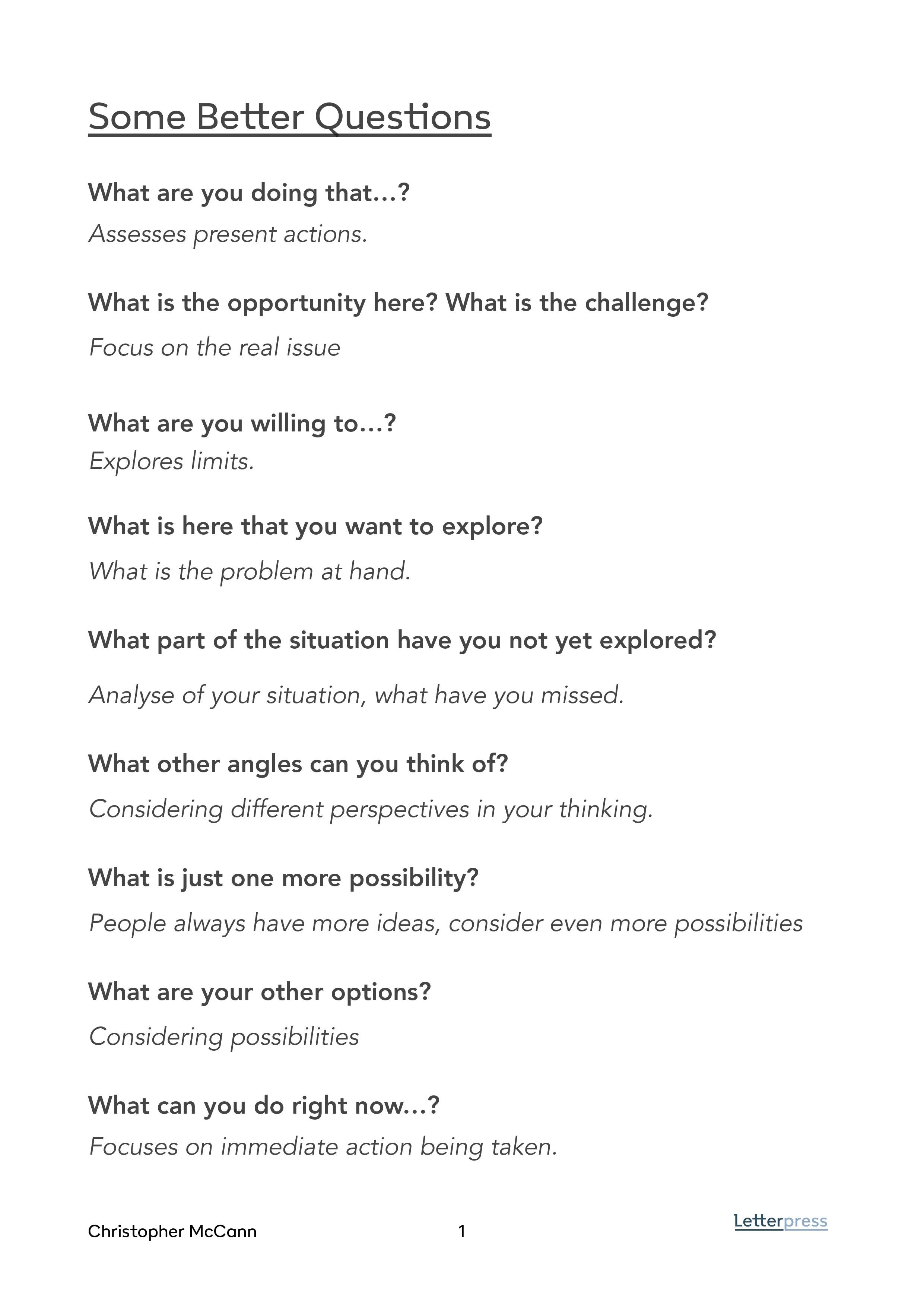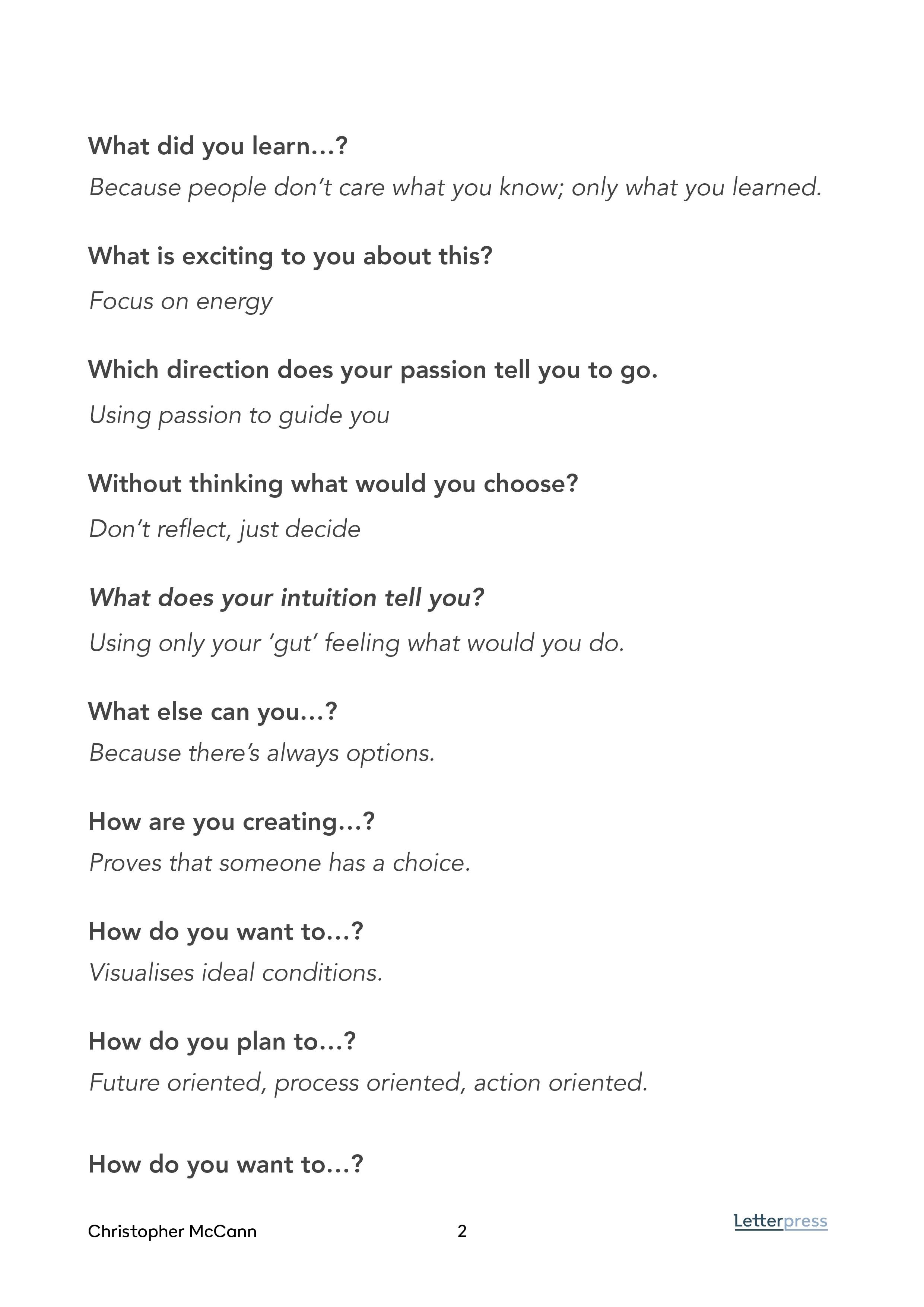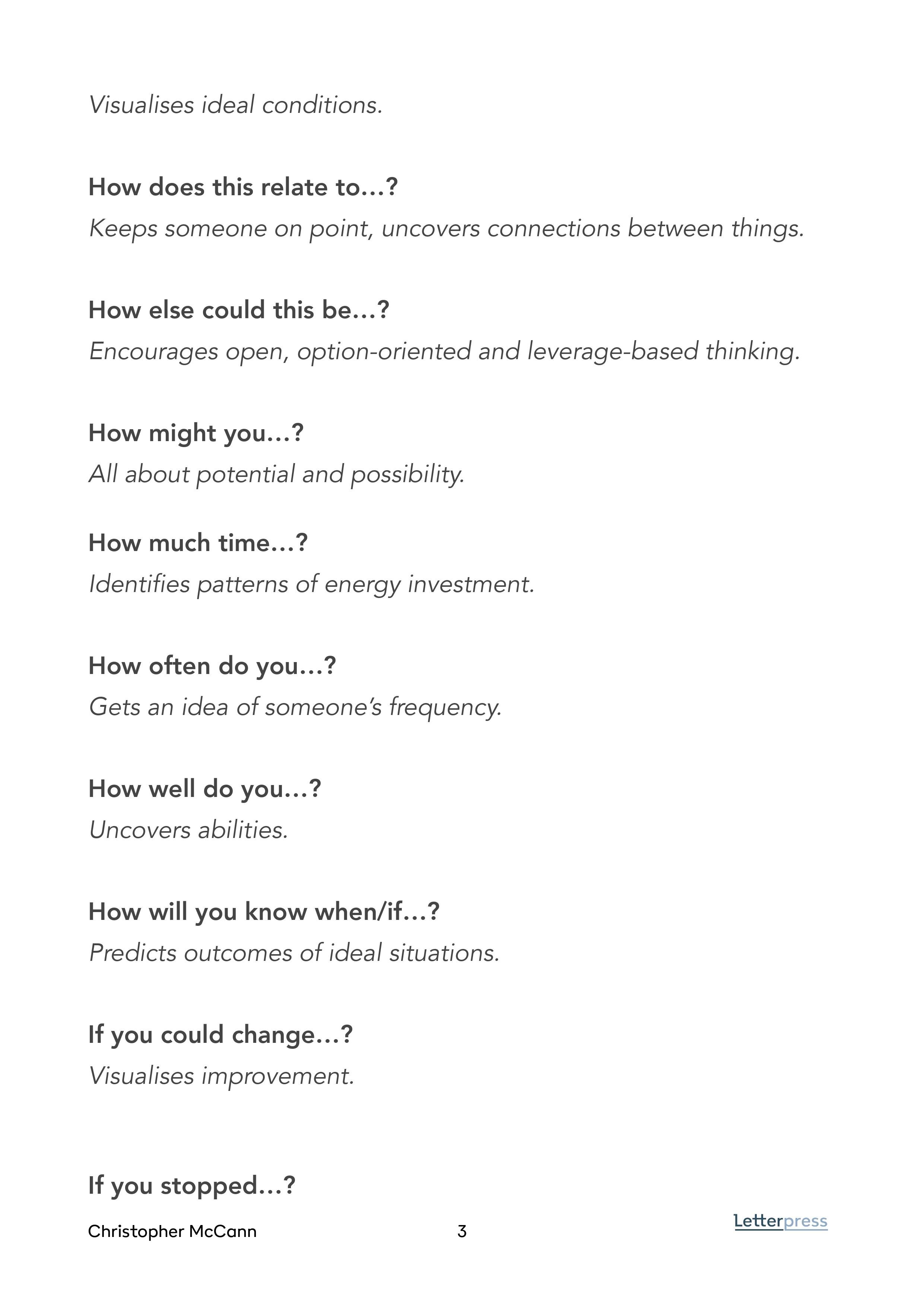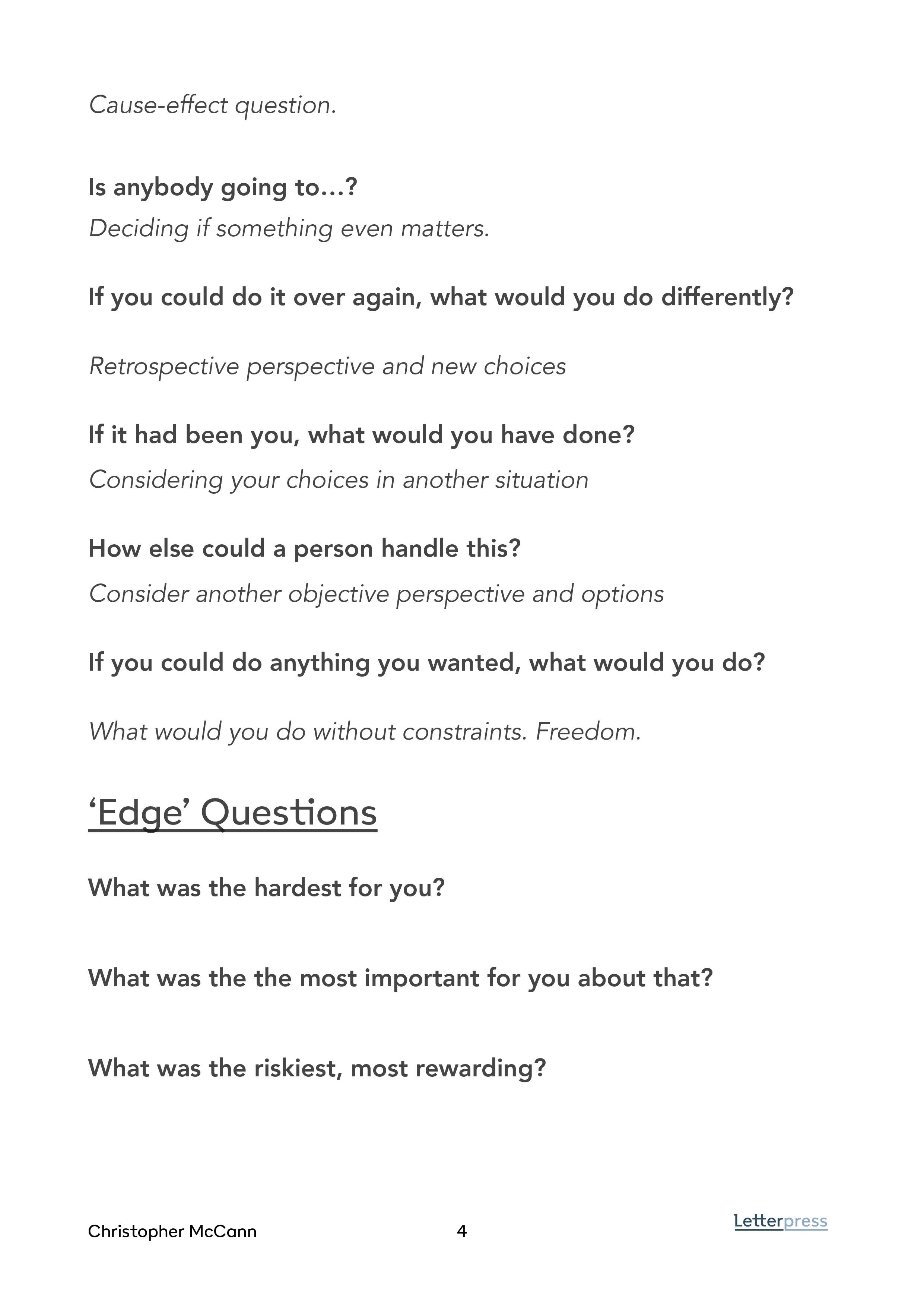During my conversations with design leaders, I often emphasis the power of asking question of their stakeholders more then speaking specifically about design. This has a few advantages. By asking questions you are demonstrating that you are curious and this creates and empathic relationship. By focusing on the decisions that need to be made by others in the organisation it allows designers to understand how they can contribute to helping the business move forward. This also demonstrates a more of modern view of leadership. Leaders are supposed to have all the answers—but it is becoming increasingly clear that the best leaders are those with the confidence and humility to ask the ambitious, unexpected questions that no one else is asking.
Although asking question is fairly easy for most of us, asking ‘good’ question is more challenging and requires some guidelines and practice. I assure you that once you learn to ask better questions you will notice a difference in many conversations in your life.
What kinds of questions do you usually ask people? We often ask Yes/No questions--they're simple and direct.
But simplicity and directness aren't our only goals, ‘Yes/No’ questions aren’t so valuable. They reveal little new information because they don't invite the other person into a dialogue, and they constrain the boundaries of the conversation.
When we move beyond ‘Yes/No’ questions, we very often as ‘Why?’ questions, such as ‘Why did you do that?’ or ‘Why did you do it that way?’
Problem is ‘Why?’ questions can be heard by the other person as "What the hell were you thinking?" and make the person defensive.
Because of this I find that ‘What and How’ questions are much more effective then ‘Why’ questions.
It can be difficult to use ‘What and How’ after years of asking ‘Why?’.
In Warren Berger’s recent book A Book of Beautiful Questions he outlines a method for converting ‘Why’ questions to ‘What’ questions. When you feel yourself asking a ‘Why’ question you can flip this around to a ‘What’ by focusing on the factors that led up to the situation.
An example:
Instead of saying
‘Why did you do that?’
Ask
‘What made you choose that option?’
Or a similar variation. You can then follow up the answer with
‘How did those factors lead to you meeting your objectives?’
‘What’ questions don't suggest that there's a "right" answer--which encourages the other person to answer thoughtfully and honestly, rather than framing an answer to please you.
Asking better questions is also part of my coaching practice. In the context of Co-Active coaching curiosity takes the form of powerful questions. Asking rather then telling is the foundation of co-active coaching and the powerful question is a cornerstone
Powerful questions invite introspection, present additional solutions, and lead to greater creativity and insight. They invite coachees to look inside
For the last year I have consciously tried to avoid ‘Why’ questions and replace them with ‘What and How’ questions. It hasn’t always been easy and sometime takes some mental gymnastics to formulate them quickly, but once you get used it the results are very positive.
I have assembled a list of questions that I have been using designed to encourage people to reflect before answering.
Notice the structure of these questions. They're almost all How? or What?questions, which encourage the other person to take a moment and look inside before answering. The simplest and most powerful thing that happens when we ask ourselves questions is that it forces us to think.
References:
Co-active coaching questions
Scott Ginsberg a list of 62 useful questions





